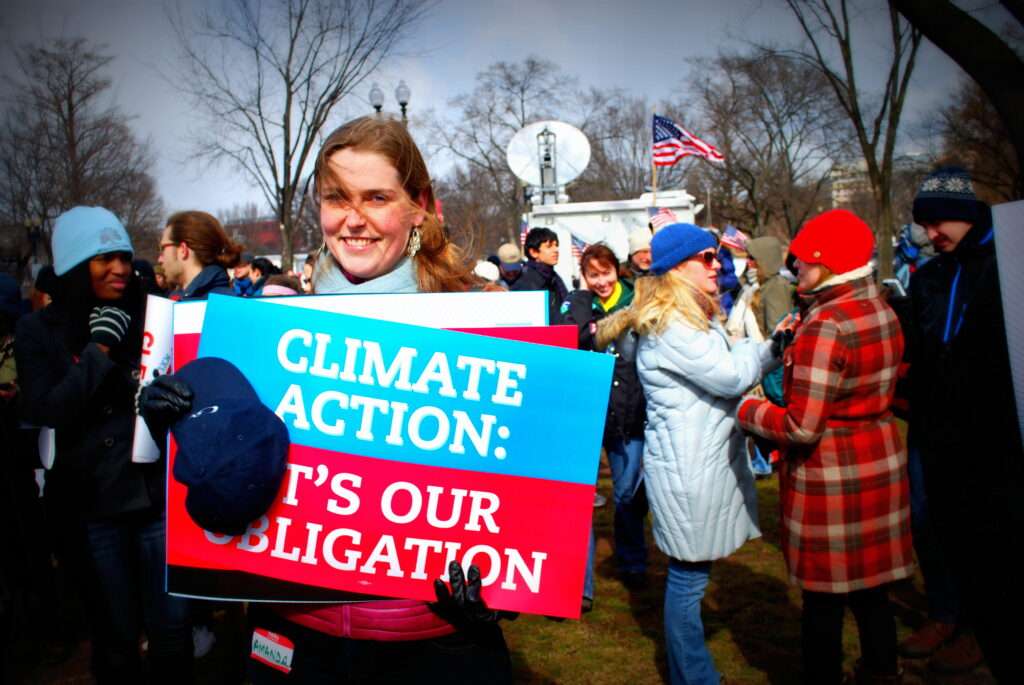
Here at the Center for International Environmental Law (CIEL), we know our strength comes from the people who make up our movement — from our staff, to our partners, to our steadfast supporters. Our “Meet Our Staff” series will introduce you to some of our amazing staff members, who work behind the scenes every day to defend the right to a healthy environment.
Amanda Kistler is CIEL’s Vice President. She’s been with the organization since 2010 and has worked across CIEL’s breadth of programs and operations. We spoke with Amanda about her unique role as CIEL’s first Vice President, her favorite memories from work, what she’s reading and listening to now, and more.
Tell us about the work you do at CIEL.
Amanda: My work at CIEL has evolved over time. I started at CIEL in 2010, coordinating a coalition of international groups in support of communities in Guatemala who were defending their rights against extractive projects, especially on Indigenous lands. Over time, the work broadened so that we were bringing international strategies to bear in supporting local groups across the Americas confronting the impacts of open pit metal mining. Not long after this, CIEL created a communications manager position — the first communications role at CIEL — and I took on this exciting new role. From the communications cockpit, my scope of work continued to evolve, first expanding to include donor engagement, and later all of CIEL’s fundraising and development as Director of Communications and Development. It’s been an exciting ride to continue to evolve my own skills alongside CIEL’s ongoing evolution and needs. Now, as CIEL’s Vice President, my work remains rooted in development, as well as communications, supporter engagement, and story-telling, even as it has expanded to include more oversight and management of organizational operations. This includes shepherding processes like strategic planning, strengthening team resilience, and generally keeping the trains on the tracks in the varied work of CIEL.
What is one of your favorite memories from work?
A: Phew, after ten years, I have so many memories, that’s a hard question… We do an intern outing every semester, and one of my favorites was a kayaking trip on the Potomac River. Picture a bunch of attorneys (and budding attorneys!) in a small flotilla of shockingly bright colored kayaks paddling haphazardly down the murky — but still sparkling — Potomac. There was a little sandbar down the river, so we got out, drew the CIEL logo into the sand, and took a picture. It was a beautiful day, and we felt very triumphant. It can be hard to get us to step away from our work, but it was wonderful being out of the office and around each other.
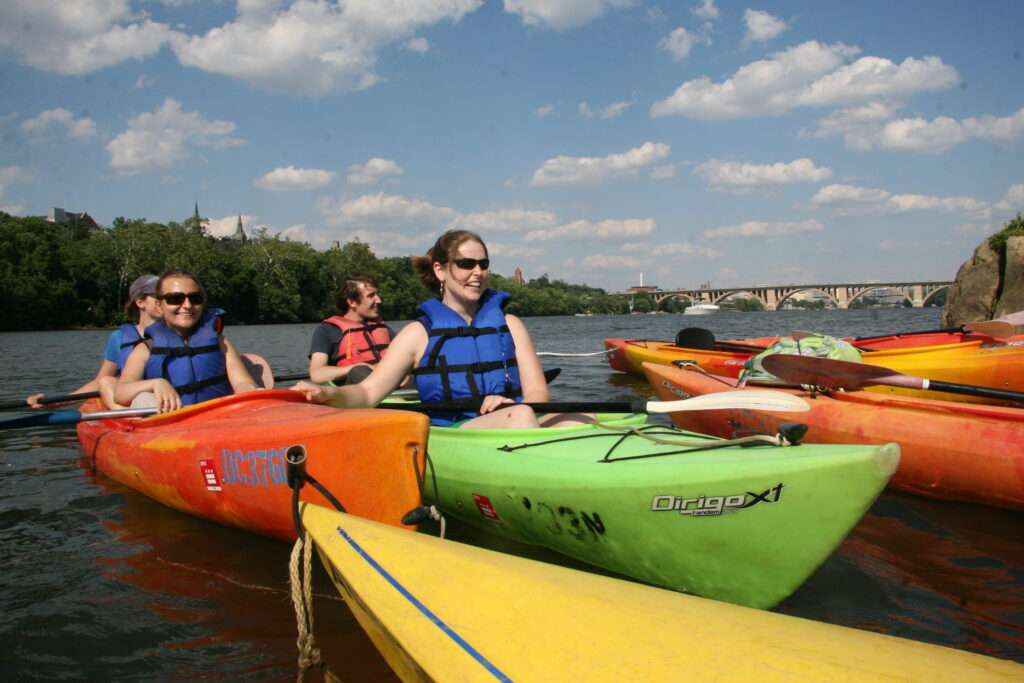
Another, very different memory that comes to mind is my first or second experience at the international climate negotiations (COP). At that point I had been at CIEL for probably six or seven years. What became immediately apparent at the COP was just how much CIEL was known and respected in the space. I had never met these hundreds of CIEL partners before, but it seemed like anytime I mentioned I was with CIEL, people’s eyes just sparkled. They knew what CIEL’s contribution was, and they respected our work. I felt like I was part of some kind of in-crowd. It was inspiring to step into that legacy of trust that CIEL had built after decades working in the climate space.
And really, all of the visits I’ve been able to make in which I can meet with affected communities – whether it’s with the Maya Mam communities in San Miguel Ixtahuacán, Guatemala, in Rosia Montana, Romania, Las Cabañas, El Salvador, Iquitos, Peru, or beyond. Each of these trips has changed my life and deepened my commitment to this work. Meeting with and learning from folks on the frontlines of these environmental threats, with community leaders and local advocates who are putting their safety on the line to defend their right to a healthy environment has got to be the most inspiring work there is. It’s an honor to work alongside them.
What changes have you seen in CIEL over the past ten years?
A: There are many! One is the development of a communications team. In its first 20 years, CIEL did a lot of heads-down lawyering. In the last ten, the communications team has garnered CIEL a well-deserved presence in the media and online. And within civil society organizations, partners increasingly look to CIEL as an authoritative figure on issues. Seeing CIEL get the coverage and recognition that it has long deserved has been especially significant.
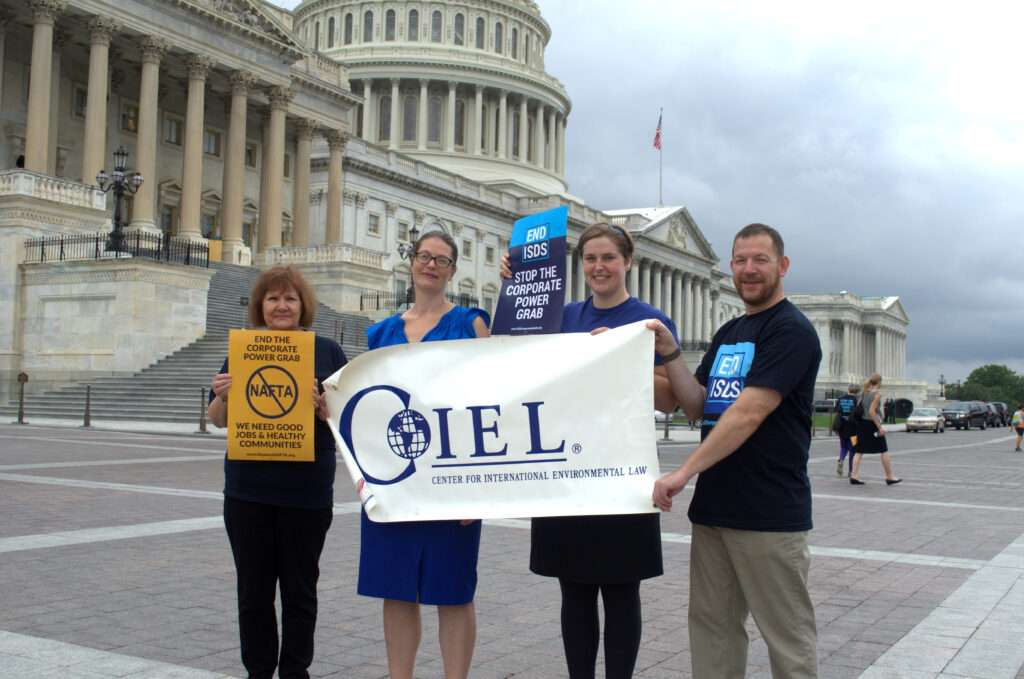
Why do you think the work you do/CIEL does is important?
A: What’s really special about CIEL is its principled approach: taking a human rights lens to all the work that we do, as well as taking our lead from affected communities and front-line partners. Taking that lead is not always easy, but it is always the right thing to do. To do that with partners on cases around the world, to really ensure that any action is to their benefit — these are the things that assure me that CIEL is the place I want to keep working. CIEL also sees the big picture and the intersections of, on one side the threats and risks, and on the other, movements and opportunities. This allows CIEL to be a key strategic partner in the fight for a better world.
What do you think is the biggest challenge facing the movement right now? Biggest opportunity?
A: One of the biggest challenges is corporate capture and corporate power — over institutions, over legal systems, over politics. In far too many ways, we don’t have enough information to make better decisions for ourselves (for example on the toxic cocktail of chemicals in our daily lives). And when we do have enough information, there aren’t real choices (for example, using cars and planes or buying products that are wrapped in plastic). Our individual choices alone will not change the system. This is industry’s biggest coup: convincing the public that our consumer choices are the problem (and the solution). Until we really confront corporate power, it’s hard to imagine how incremental steps get us to the equitable, healthy world we need and deserve. That’s why CIEL is so important: countering this industry narrative, exposing its role in environmental destruction and injustice, and working to transform the system itself to better serve people and the planet.
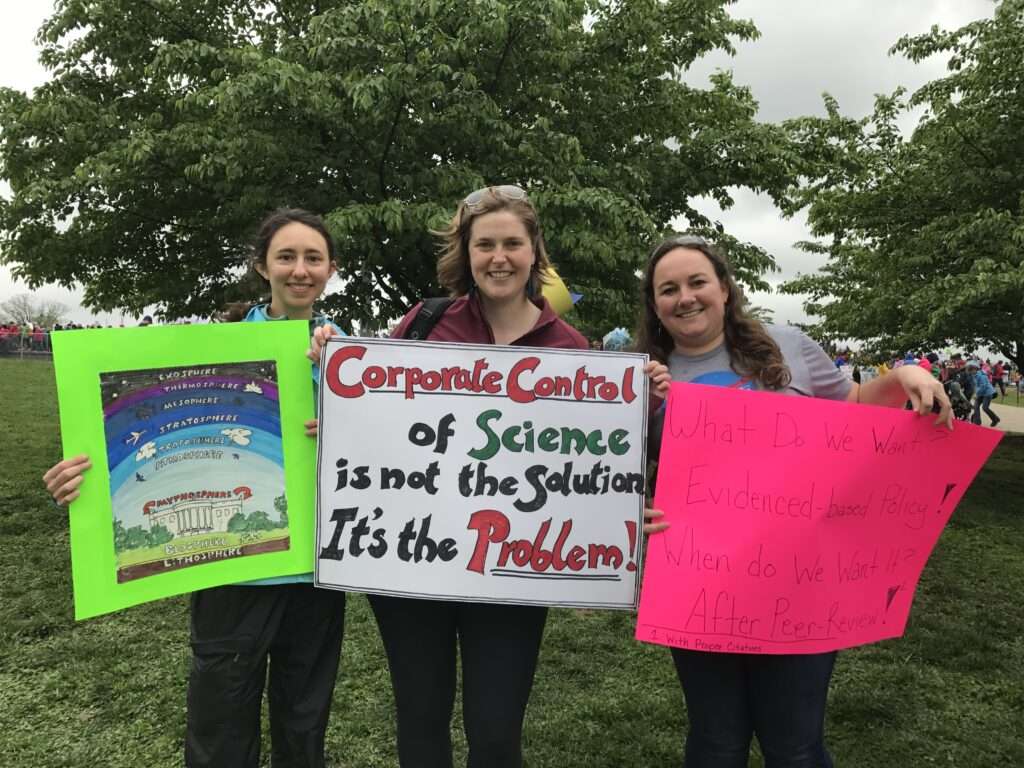
For someone who’s looking to make an impact for the environment, what do you think are the best ways to get involved?
A: The first step for an individual is to read/listen up and learn about how much the problem (and solution) goes beyond the individual. Part of that is recognizing the power of movements—understanding what’s worked in the past, what has shifted momentum, what change really looks like. And then the other piece is understanding how to work towards changing the system. That means joining a local chapter of environmental organizations – but choose one that is bold, and working for systems change. If we aim small, the greatest we’re going to achieve is small; and the time for incrementalism is over. But if we aim big, we’ll achieve something significant.
What do you like to do in your free time?
A: I really like to ride my bike on local bike paths, or go for long rides on backcountry roads. That’s how I commute to and from the office (when we’re not quarantined); it’s a really beautiful ride, along the Potomac. I also continue to organize with the group that I had worked with in Guatemala, the Network in Solidarity with the People of Guatemala — NISGUA. I think their work is really exciting and a great model for what cross-border solidarity looks like in practice. I’m also a big board game geek, love creative cooking, and spend a lot of time with my cats, Penny and Gadget. Dancing is my happy place.
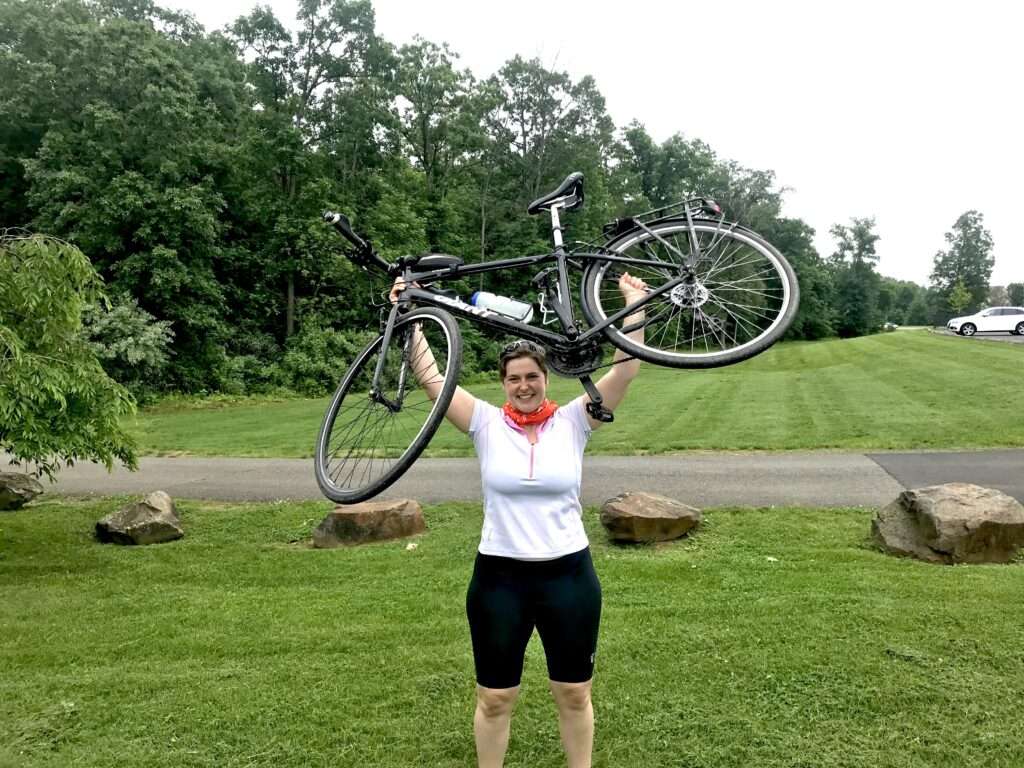
What are some books or podcasts that you’ve been listening to recently?
A: As for podcasts, I’ve been enjoying “Drilled,” the podcast by Amy Westervelt that exposes the climate crisis through the lens of corporate malfeasance, and it features some familiar CIEL voices. The podcast “Throughline” is blowing my mind in short 25-minute chunks. As for books, I just enjoyed “The Vanishing Half” by Brit Bennett, “Long Way Down” by Jason Reynolds, and “The Night Watchman” by Louise Erdrich. My go-to page turners are Tana French’s mysteries and The Expanse Series by James S. A. Corey. Also, I’ll listen to Brene Brown’s audiobooks on repeat any day.
If your coworkers were to give you a superlative award, what would it be?
A: Most likely to be solving problems that others haven’t discovered yet.
What is your superpower?
A: Well, I’ve always thought about what I’d like my superpower to be: forced empathy. I would like to make other people be empathic; I think it would solve a lot of our problems. I also fancy myself a bit of a cat whisperer.
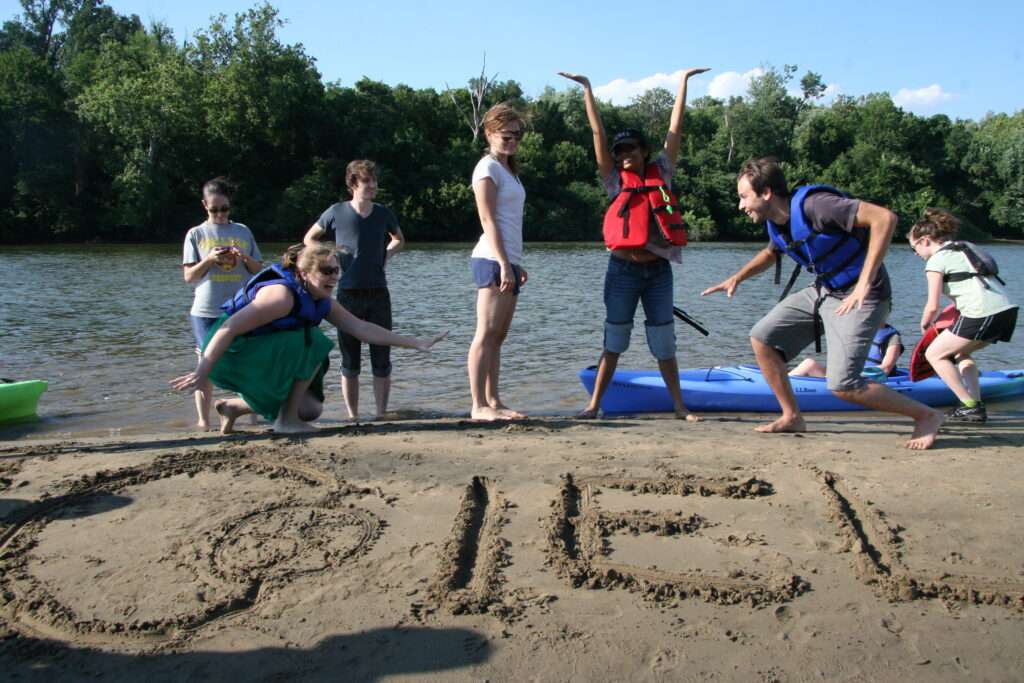
Interviewed by Owen Torrey, Communications Intern
Originally posted on May 24, 2021
